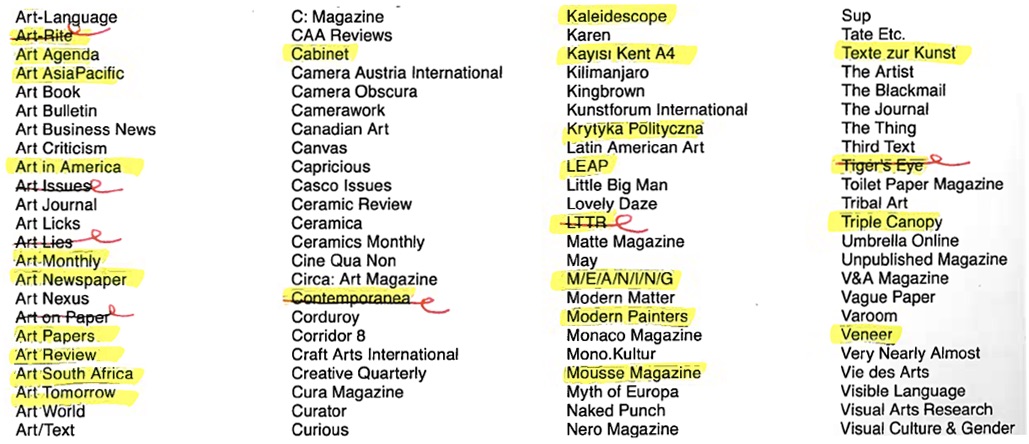The Ghost of Artforum or The Promise that Ideas Matter for Art (Still)
In the Nov-Dec 2013 issue of Art Papers, Ben Davis, writing on the cultural, social and political context that led to the rise of Artforum in the 1960s and to the subsequent rise of theory-orientated art magazines in its wake – amongst which CIRCA may be counted – offers much food for thought on their present potential.
Davis first identifies the explosion of university education in the US after WWII and the growing social confidence of academics thus providing a potential audience for a magazine “that framed art in terms of ideas instead of feelings”. He also points to the social and political debates that shook the period from the civil rights movement to feminism and post-colonialism (also leading to a New Art History):
In short, during the period, a large-circulation art magazine could seem particularly relevant because there were particularly relevant debates taking place, not just among small groups of artists, but across the dramatically expanded field of art writing and across the country. (p.46)
To these two favourable conditions was added the need for an emerging contemporary art market for legitimisation:
In the 1960s and 1970s, a theory-driven criticism could play a specific commercial role: it was Artforum’s editorial innovation to focus specifically on new art, which, with relatively little historical justification, needed a legitimating code. Theory could provide that better than personal anecdote, and a periodical magazine, by definition driven to highlight new things each month, was a perfect site for this conjunction. (p.47)
However, Davis is keen to point out that this particular role would necessarily be transitional and that the art boom of the 1980s changed the dynamic towards major newspapers and weeklies: “Money and celebrity become major drivers of market value, and a specialized kind of writing about art no longer has the unique role of motivating interest.” (p.47)
Thus the rise and role of a glossy art magazine “steeped in a language that was so self-consciously mandarin” was “determined by a very peculiar set of forces in temporary alignment: a surging – but not yet totally secure – art market, an ascendant culture of academic discourse, and the reality that the institution of the glossy specialty magazine could serve as the mediator. This conjunction of factors is over.” (p.47)
Davis surmises that future platforms for serious critical thought will probably look more like Art-Rite than Artforum – scrappy, guerrilla publications on the edges of the business. And he concludes rather optimistically:
But in the shadow of the ever more pronounced brain-dead character of contemporary art industry, nostalgia for the ‘good old Artforum’ might be turned in a positive direction – or at least given a positive spin. The very odd historical place of this magazine means that its ghost bears with it the promise that ideas matter for art – not just at the margin or for specialists, but at the center. By all means, let’s challenge how specific theories and ideas have become little more than press-release boilerplate, or need to be renewed by a vital relation to the present. But the general heritage – the idea that visual art deserves a language distinct from any other form of luxury good or high end entertainment, that it’s something that should interest people interested in ideas – is one that is worth holding onto. (p.48)
